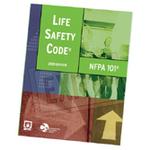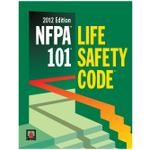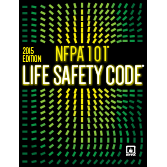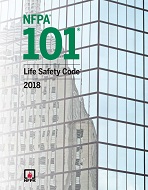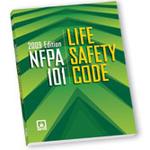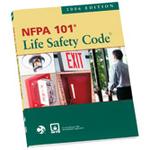
Click here to purchase
Now Shipping!
Groundbreaking changes in the 2006 LSC® herald a new era of safety!
From sprinklers, alarms, and egress to emergency lighting, smoke barriers, and special hazard protection, today’s NFPA 101®: Life Safety Code® is your blueprint for safety! The 2006 edition incorporates the latest technologies, advances, and safety strategies to help you meet today’s challenges and achieve higher levels of protection for building occupants than ever before.
To reduce fire injuries and deaths, this latest LSC edition mandates that the following occupancy types must be sprinklered:
- All new 1- and 2-family dwellings
- All existing nursing homes
- Existing nightclub assembly occupancies where occupant load exceeds 100 people
- New nightclub assembly occupancies regardless of occupant load
A new chapter on existing building rehabilitation provides greater flexibility to encourage adaptive reuse without sacrificing life safety
In previous Code editions, modifications to existing buildings had to comply with provisions for new construction. ‘The 2006 Life Safety Code’s new Chapter 43 introduces specific requirements for:
- Repairs
- Renovations
- Additions
- Reconstruction
- Change of use or occupancy classification
- Historic buildings
Other important changes affect:
- Health care occupancy suites
- Alcohol-based hand-rub solution dispensers in corridors of health care occupancies
- Smoke control systems in new malls
- Crowd managers in assembly occupancies
- Stair descent devices for people with disabilities
- Stair width in certain new buildings to improve counterflow between occupants and first responders.
Product Details
- Published:
- 10/01/2005
- Number of Pages:
- 429
- Part of:
- NFPA (Fire) 101ST06
- Product Code(s):
- 10106


